Need Shade Fast? A Pro’s Unfiltered Guide to Fast-Growing Trees
I’ve been working with trees for a long, long time, and you know the number one thing I hear from new homeowners? They want shade, and they want it yesterday. I totally get it. You move into a new place, the yard feels like a fishbowl, and you’re desperate for that leafy, private canopy to make it feel like home.
In this article
But here’s the thing: the idea of an “instant tree” is mostly a myth. While some trees are definitely speed demons, the real challenge is picking one that grows up strong, not just fast. A tree that won’t turn into a huge, expensive problem a decade down the road.
Let’s be honest, a lot of the super-fast growers you see at big-box stores are a bad deal. They often trade strength for speed, which can lead to a world of hurt later. This guide is built on years of experience—both planting beautiful trees and, unfortunately, cleaning up the mess from poorly chosen ones after a big storm. We’ll look at some genuinely fast options, but with a pro’s eye for what really matters: how well they live, what headaches they cause, and how to give them a great start.
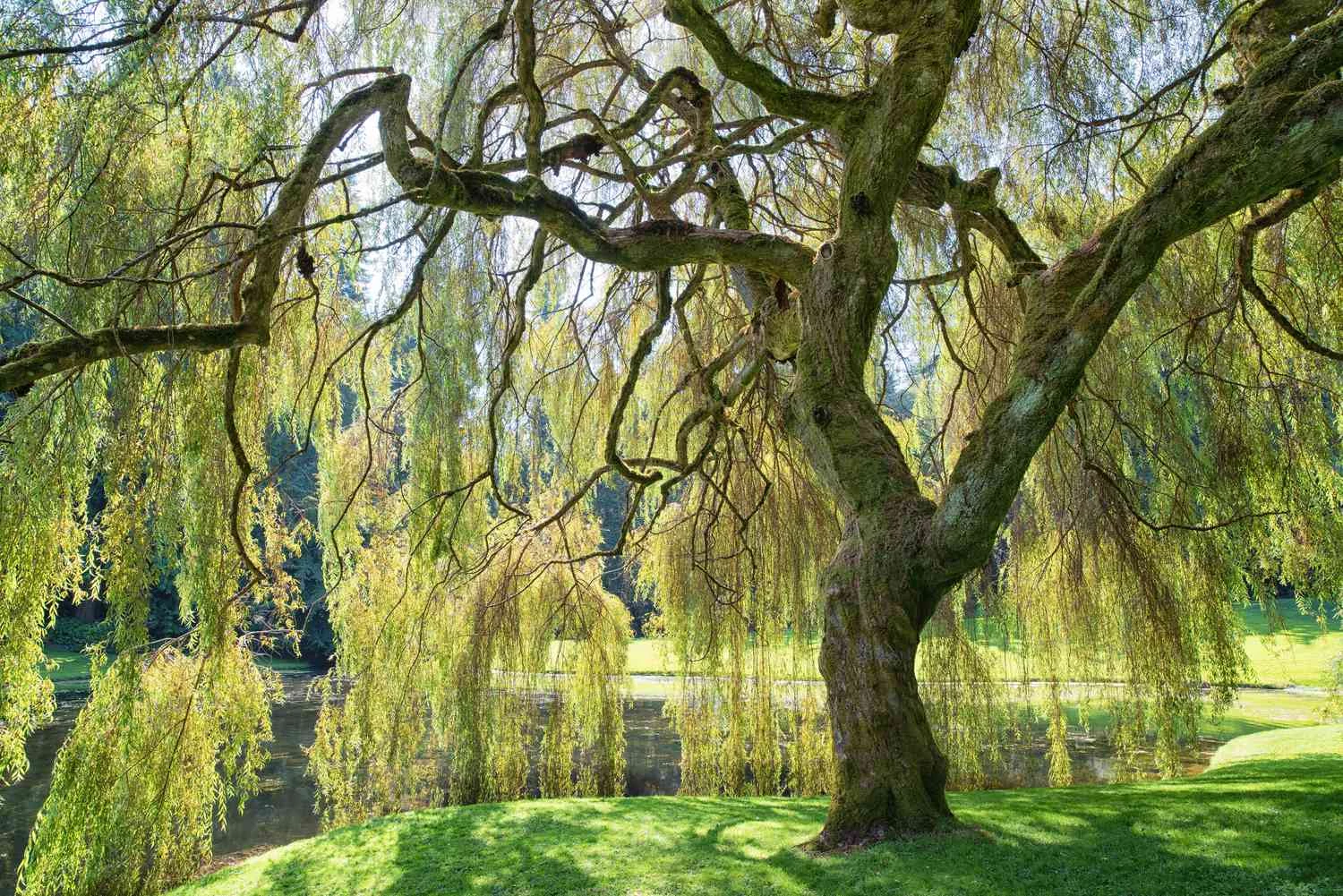
Why Some Trees Are Sprinters (and Others Are Marathon Runners)
So, why do some trees shoot up while others take their sweet time? Think of a tree’s energy like a financial budget. It gets all its income from sunlight and has to decide how to spend it on three things: growing bigger, defending itself from bugs and disease, or making seeds.
The fast-growing trees are the big spenders. They throw almost their entire budget into getting tall, fast. They do this by making wood with bigger cells and thinner walls. This low-density wood is their secret to speed, but it’s also their biggest flaw. It’s softer, more brittle, and way more likely to snap in a windstorm or under a heavy ice load.
Slower growers, like a classic oak tree, are more conservative. They invest their energy in building dense, strong wood. They also spend a lot on their defense systems, creating chemicals that make them taste bad to insects or fight off fungus. It’s why an oak can handle a hurricane and live for generations, while a quick-growing poplar might just fall apart after a couple of decades.
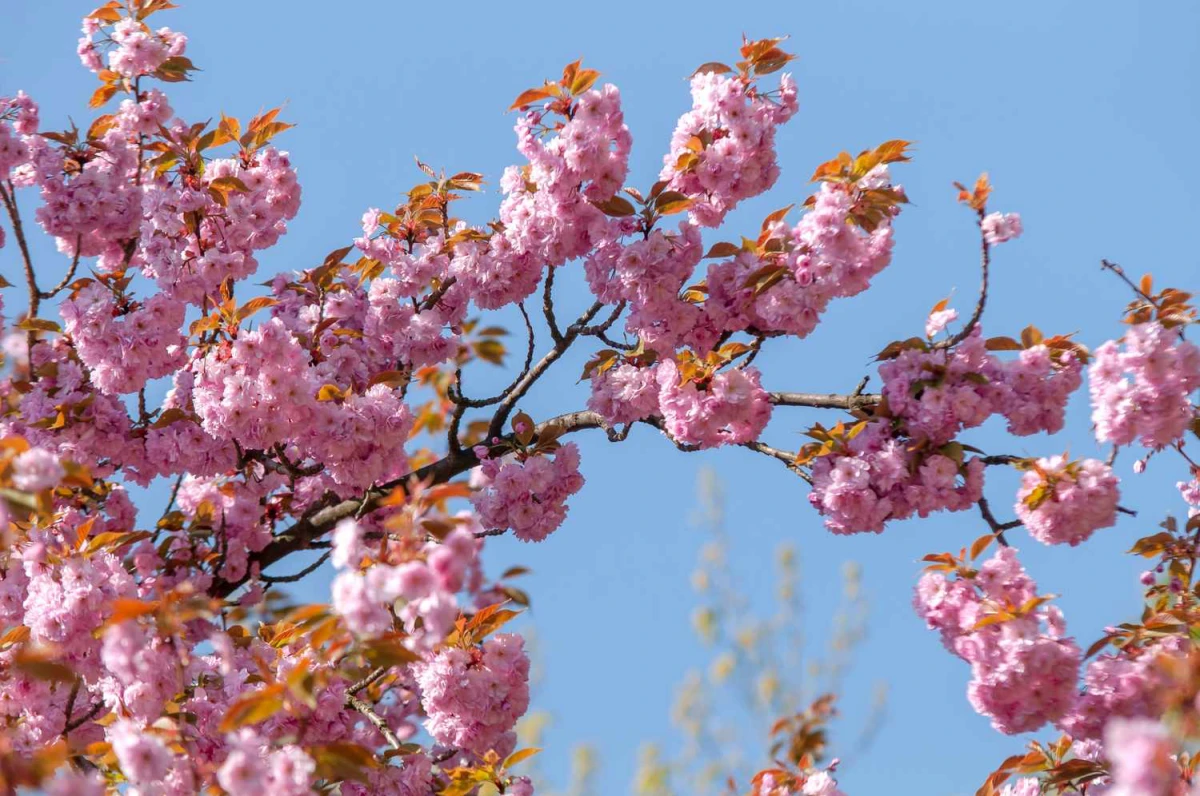
Understanding this trade-off is probably the most important thing you need to know. You’re not just picking a tree; you’re picking its life strategy. The trick is to match that strategy to your yard and your goals.
Don’t Buy a Tree Until You Do This First
Before you even dream about a specific tree, you have to get to know your yard. This is the step people always want to skip, and it’s the biggest mistake you can make. Putting the perfect tree in the wrong spot is a recipe for a sad, dead tree and a wasted weekend.
Here’s what I look at on every property:
- Soil Check: You don’t have to be a scientist. Grab a simple soil test kit from a garden center or your local university extension office. These usually cost less than $20 and will tell you if your soil is acidic or alkaline, and if it’s mostly clay, sand, or a nice loam. A tree that loves acid soil will look sickly and yellow in alkaline clay.
- The Drainage Test: This one is easy. Dig a hole about a foot deep and fill it with water. If it drains away in a few hours, you’re golden. If water is still sitting there the next day, you have poor drainage. Most fast-growing trees hate having “wet feet” and will get root rot.
- Sunlight Map (Your Weekend Challenge!): Don’t just guess “full sun.” This weekend, grab a notebook. Sketch a rough map of your yard and check it at 9 am, 1 pm, and 5 pm. Note where the direct sun is hitting. “Full sun” means at least 6 hours of direct, unfiltered light. Most of these fast growers are sun-worshippers.
- Know Your Space: Look up! Are there power lines? A tree that wants to be 50 feet tall can’t go under wires that are only 30 feet high. Now, look down. Do you know where your sewer and water lines are? Aggressive roots can absolutely destroy that plumbing. Heads up: Always call 811 before you dig. It’s a free service that marks all your underground utilities.
- Hardiness Zone: This is non-negotiable. Look up your USDA Hardiness Zone online. It tells you the coldest average winter temperature in your area. A tree rated for Zone 7 simply won’t survive a Zone 5 winter.
Once you’ve done this homework, you can start shopping with confidence.
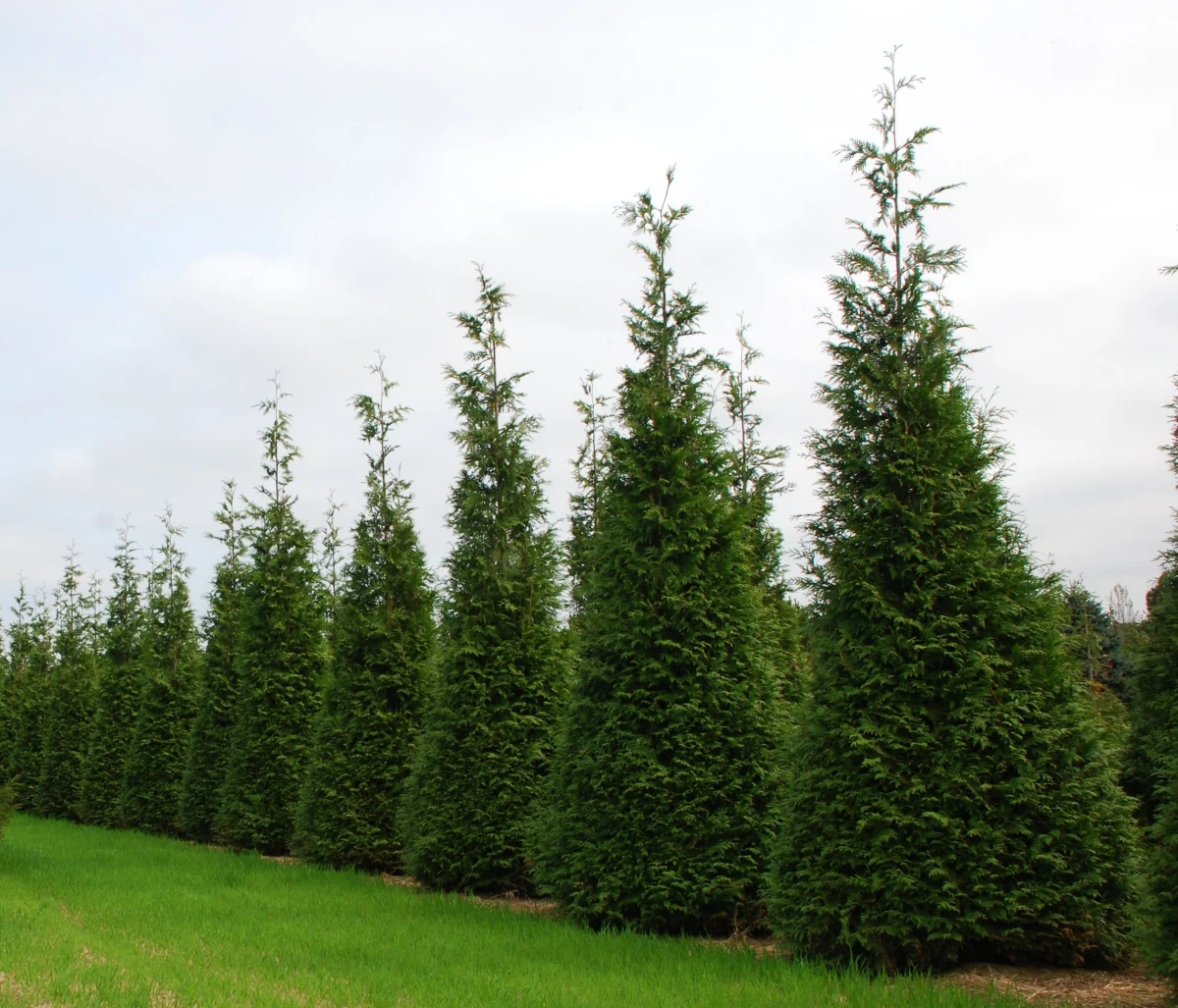
The Real Scoop on Popular Fast-Growing Trees
Alright, let’s talk trees. I’ll give you the growth rates you see online, but I’ll also give you the unvarnished truth from someone who’s planted, pruned, and removed them all.
The Go-To for Privacy: Thuja ‘Green Giant’
This is the tree everyone asks for when they want a fast privacy screen, and for good reason. It’s a hybrid that gets its speed from one parent and its disease resistance from another—a great combination.
- Real-World Growth: In good soil with plenty of sun, I’ve seen these reliably put on 3 to 4 feet a year when they’re young. They slow down once they get bigger.
- Where to Buy & Cost: You can find these at big-box stores and local nurseries. A smaller 5-gallon plant might cost you between $40 and $90. A larger, 15-gallon tree that gives you more of a head start could be in the $150 to $300 range.
- Pro Planting Tip: For a screen, don’t plant them in a single, tight soldier line. It looks unnatural and chokes off air circulation. I always recommend two staggered rows, with trees spaced about 8 to 10 feet apart. It creates a much denser and healthier wall of green over time.
- Weaknesses: Two words: DEER CANDY. If you have deer, they will eat these, especially in the winter. You absolutely must protect young trees with fencing or repellent spray. They also need consistent water for their first couple of years to get established.
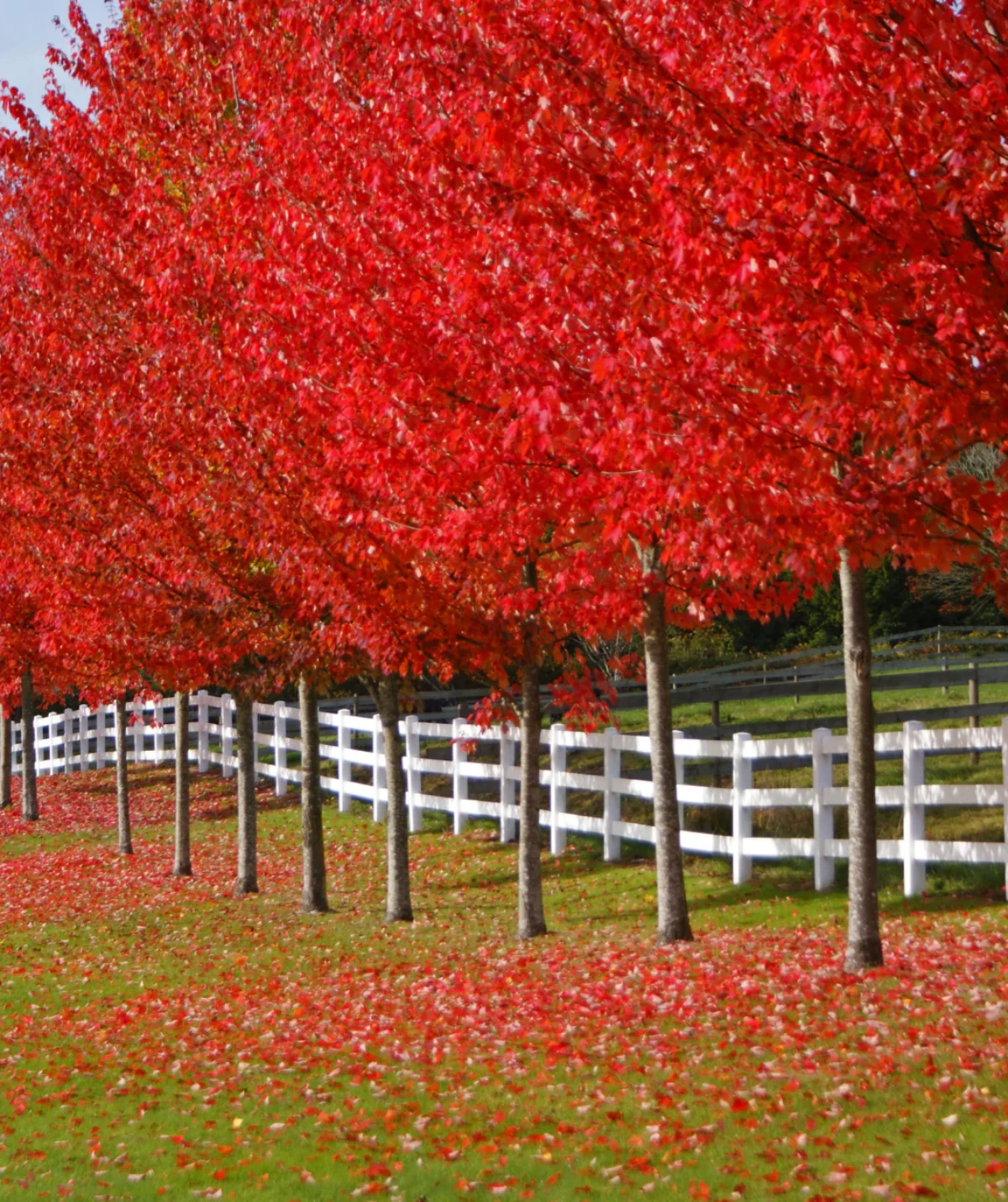
The Crowd-Pleaser with a Dark Secret: Autumn Blaze Maple
This tree is incredibly popular. It was bred to have the fast growth of a Silver Maple and the stunning fall color of a Red Maple. It definitely delivers on both fronts, growing about 3 feet a year.
- The Hidden Flaw: Unfortunately, it also inherited the Silver Maple’s biggest problem: weak wood and bad structure. The branches tend to join the trunk at a very sharp, narrow angle. This creates a weak point that’s incredibly prone to splitting off in a storm. I’ve cleaned up more giant limbs from these trees than I can count.
- How to Manage It: If you plant one, you are also signing up for professional pruning. For the first 5-7 years, you need a certified arborist to shape it. They’ll establish a strong main trunk and fix those bad branch angles. By the way, this isn’t a DIY job. Expect to invest around $150 – $400 for this service on a young tree. It’s an absolute bargain compared to the cost of having a 2,000-pound limb smash your roof.
- Quick Warning: It has shallow, aggressive roots that will lift sidewalks. This is NOT a tree for a small yard or that little strip between the sidewalk and the street.
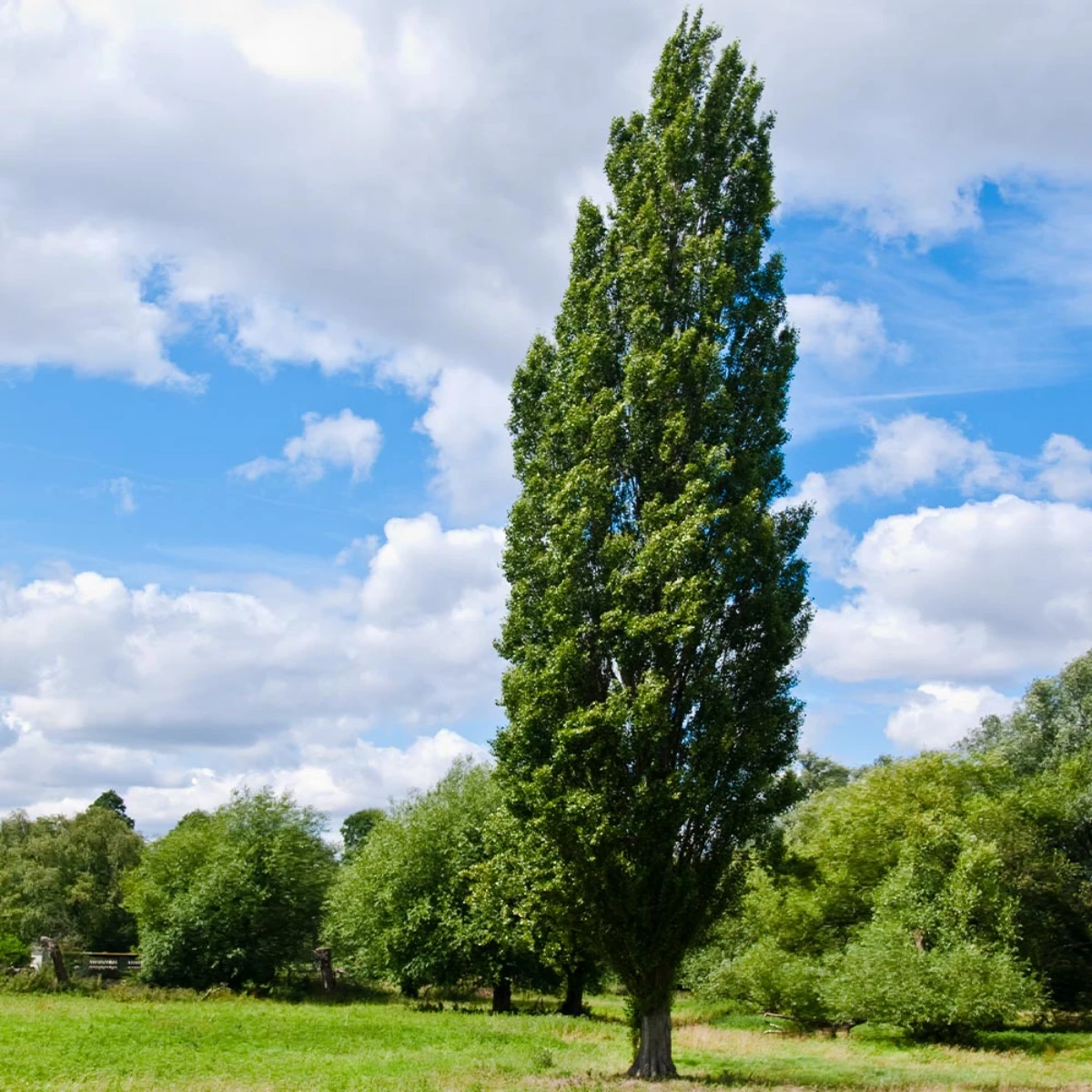
The Gentle Giant (for HUGE Yards Only): Tulip Poplar
A truly magnificent native tree, the Tulip Poplar is a rocket. In a good spot, a young tree can easily grow 4 to 6 feet in a single year. It wants to be a forest giant, and it grows like it.
- The Size Issue: Please hear me on this: this is NOT a tree for a typical suburban lot. It matures to over 100 feet tall. Planting this 20 feet from your house is a massive mistake that will eventually threaten your foundation. This tree is for parks or properties with acres to spare.
- The Nuisance Factor: While stronger than a maple, its wood is still on the softer side and can drop branches. Oh yeah, and it’s a favorite of aphids. These bugs secrete a sticky goo called honeydew that coats everything underneath—your car, your patio furniture—which then turns black with sooty mold. It’s a mess to clean up.
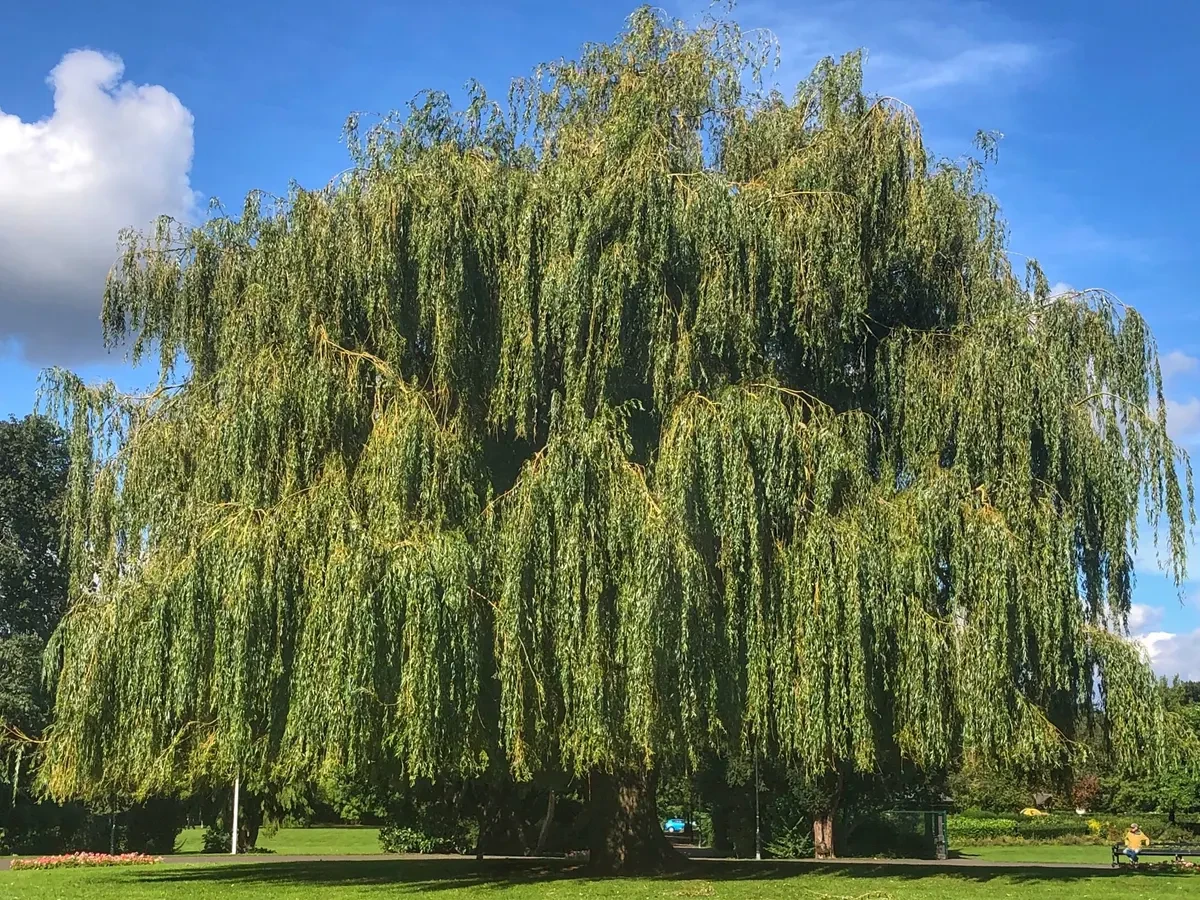
The Romantic but Risky Choice: Weeping Willow
There’s no denying the grace of a Weeping Willow. It grows fast, maybe 2-3 feet a year, but that speed comes with major warnings.
- The Water-Seeker: Willow roots are legendary for how aggressively they hunt for water. This is the most critical thing to understand.
- A Quick Horror Story: I once got a call about a backed-up septic system. It turned out the entire leach field was completely choked with a solid mat of willow roots from a tree planted 75 feet away. The repair cost the homeowner over $15,000. So when I say to plant this tree AT LEAST 100 feet from any septic, sewer, or drainage lines, I’m not kidding.
- Lifespan & Mess: The wood is super brittle, and it’s always dropping twigs. They’re also pretty short-lived, often looking rough after 20-30 years due to diseases. It’s best for a low, wet spot on a very large property where its roots can’t get into trouble.
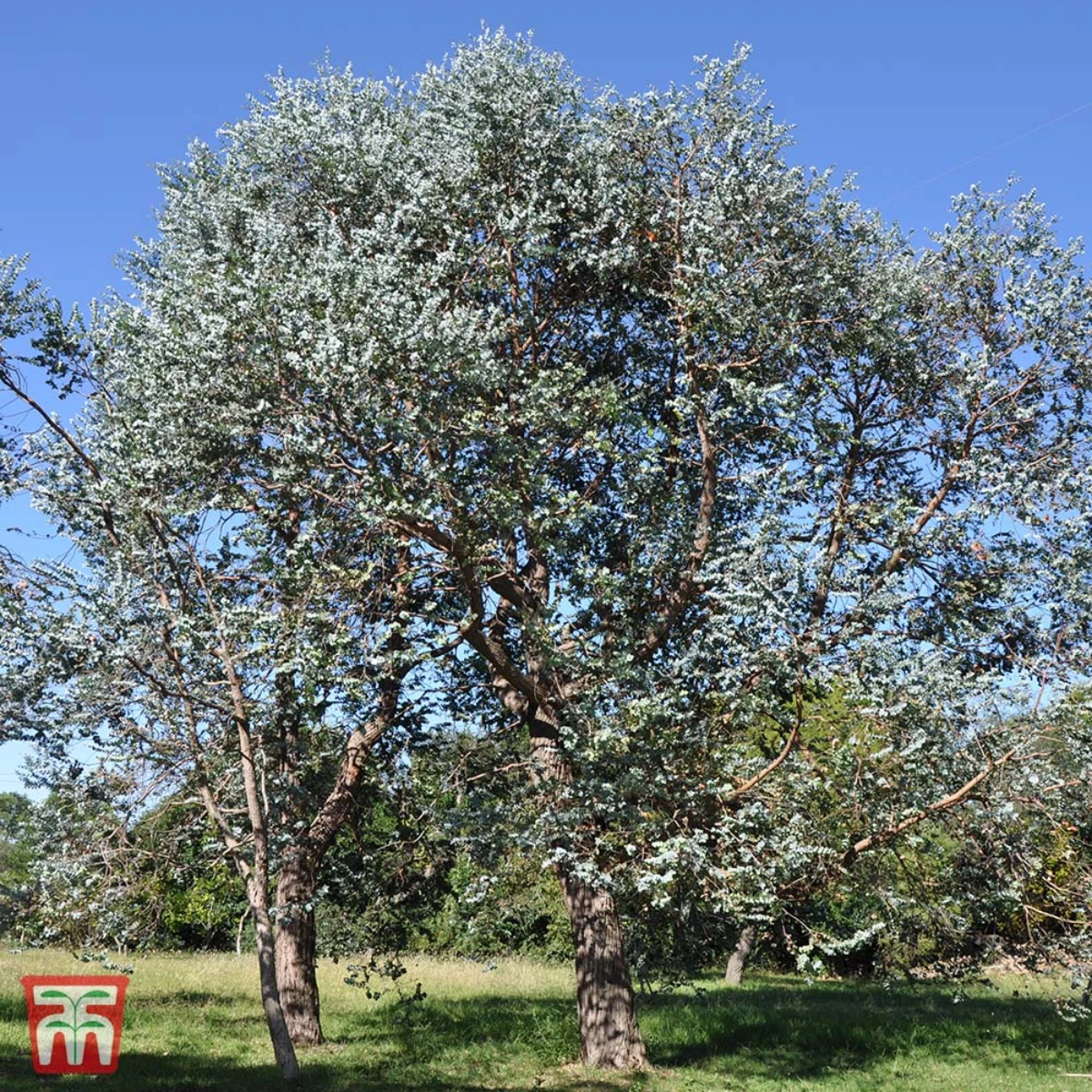
Trees I Almost Never Recommend
Some trees are just so problematic that I actively tell people to avoid them. The Lombardy Poplar is at the top of that list. It can grow an insane 6+ feet a year, but it’s a ticking time bomb. It’s incredibly prone to a fatal disease and rarely lives past 15 years before it starts dying from the top down, becoming a huge, ugly hazard. Removing a row of dead 40-foot trees is an expensive nightmare.
The Pro-Level Strategy: Succession Planting
Want the best of both worlds? Try what the pros call succession planting. You plant a fast-growing tree for a quick effect right next to a slower-growing, high-quality permanent tree. For example, plant a screen of Thuja ‘Green Giants’. Then, about 15 feet in front of them, plant a staggered row of something amazing and long-lived, like a White Oak or American Holly. The Green Giants give you privacy for the first 15 years. As the oaks slowly mature, they become the main event. Once they’re big enough, the temporary ‘nurse’ trees can be removed. It’s a brilliant way to get quick results and lasting value.
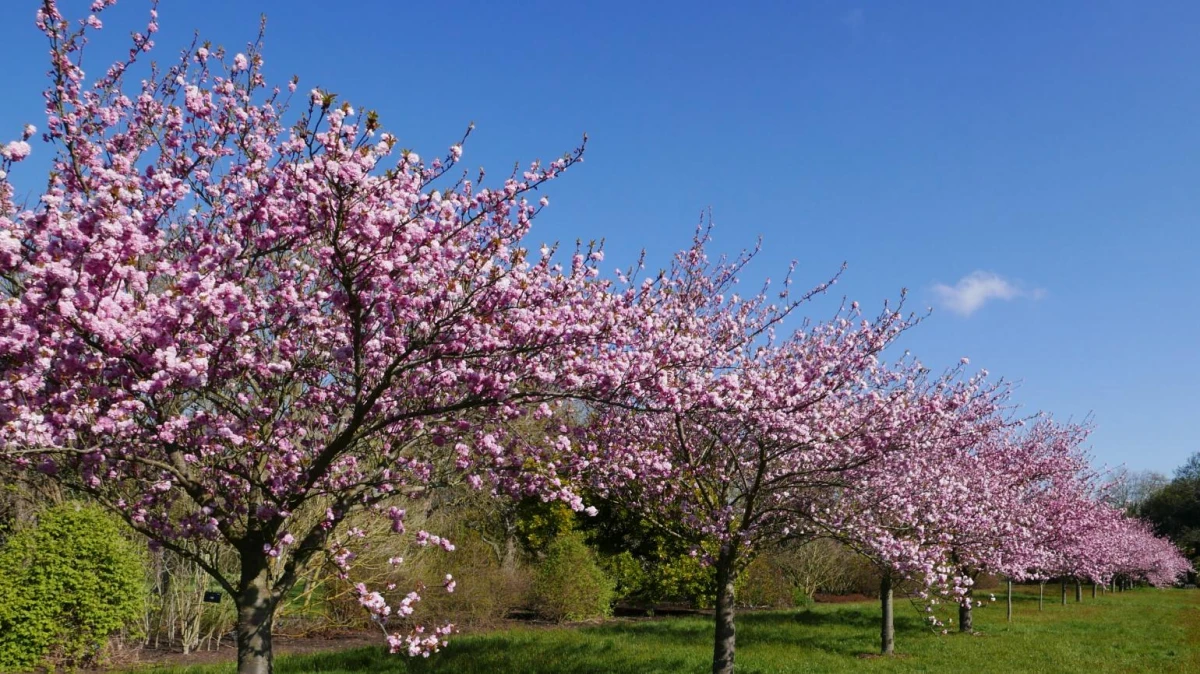
Final Thoughts: Your Top 3 Rookie Mistakes to Avoid
Choosing the right tree is half the battle. Planting and caring for it correctly is the other half. Here are the most common mistakes I see:
- Planting Too Deep. This is the #1 killer. You must see the “root flare”—where the trunk widens out just before the roots start—at or slightly above the soil level. Burying it will slowly suffocate your tree.
- Watering Wrong. A light sprinkle every day is useless. New trees need a deep soak. What’s a deep soak? Think 5-10 gallons of water delivered slowly right at the base, once or twice a week during dry spells. A soaker hose on a low drip for an hour is perfect.
- Creating a “Mulch Volcano.” Piling mulch up against the trunk is a big no-no. It traps moisture and invites rot and pests. Create a mulch donut, 2-3 inches deep, but keep it a few inches away from the trunk itself.
And if you’re planting a bigger tree or dealing with something like an Autumn Blaze Maple that needs structural pruning, do yourself a favor and call in a pro. You can find a local, certified arborist through the International Society of Arboriculture (ISA) website. Their expertise is worth every penny.
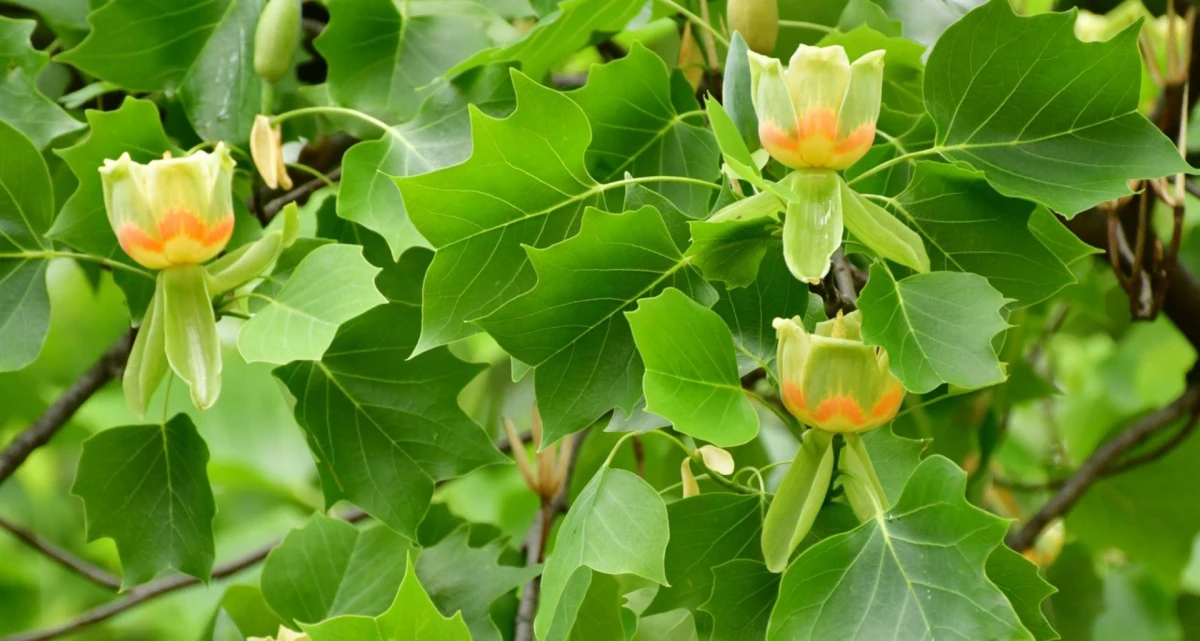
Fast-growing trees are great, but they demand some homework. Balance that need for speed with a little knowledge, and you’ll get a beautiful landscape that grows quickly and lasts a lifetime.
Galerie d’inspiration
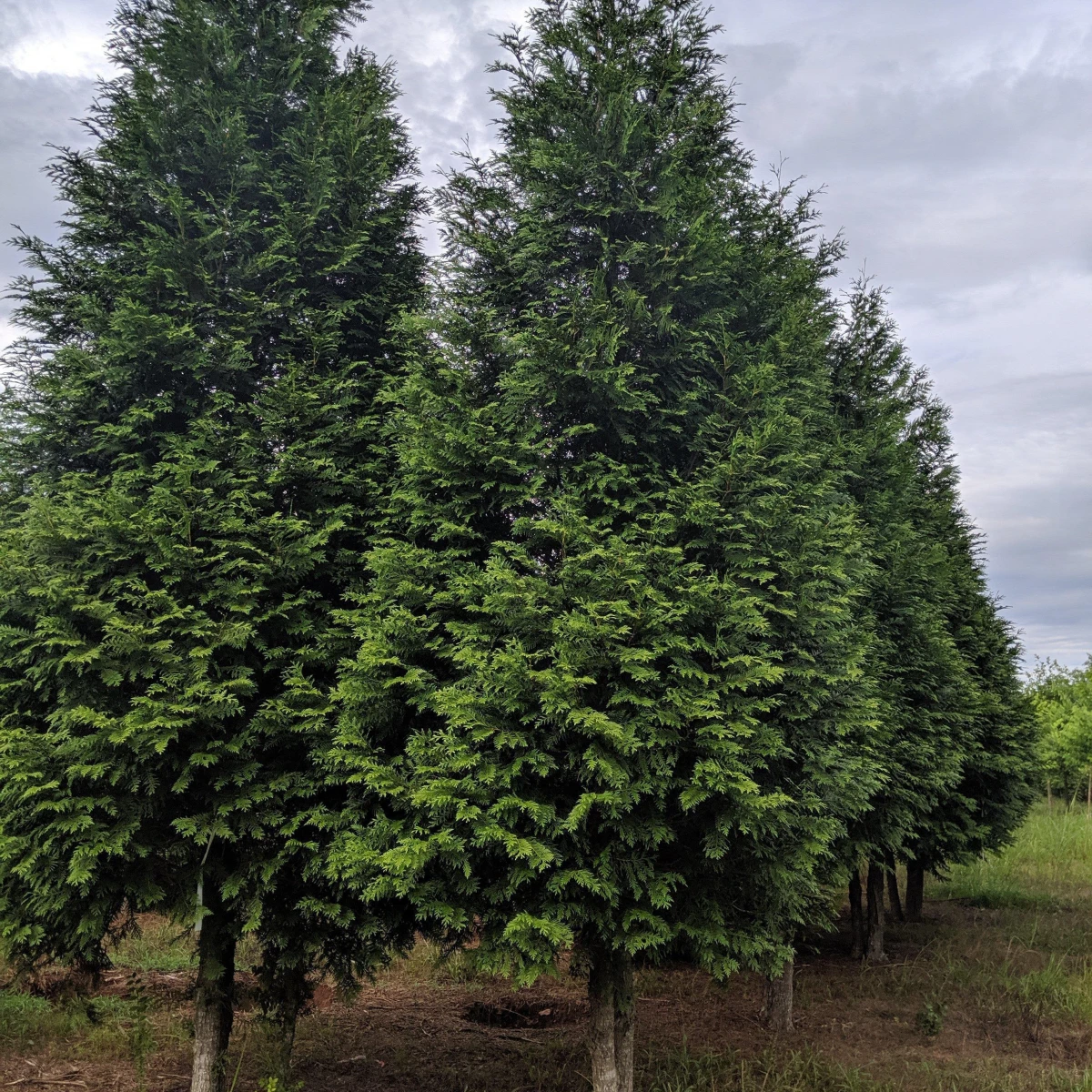
My yard is small. Can I still plant a fast-growing tree close to the house for shade?
This is one of the most tempting—and costly—mistakes. Fast-growing trees often have equally fast-growing and aggressive root systems. A Weeping Willow, for example, has roots notorious for seeking out and invading sewer lines, potentially costing thousands in repairs. As a rule of thumb, a tree that will grow 50 feet tall should be planted at least 20-25 feet away from your home’s foundation, septic fields, and underground utility lines. For giants like the Thuja ‘Green Giant’, give them even more space. Always plan for the mature size, not the small sapling you’re putting in the dirt today.










